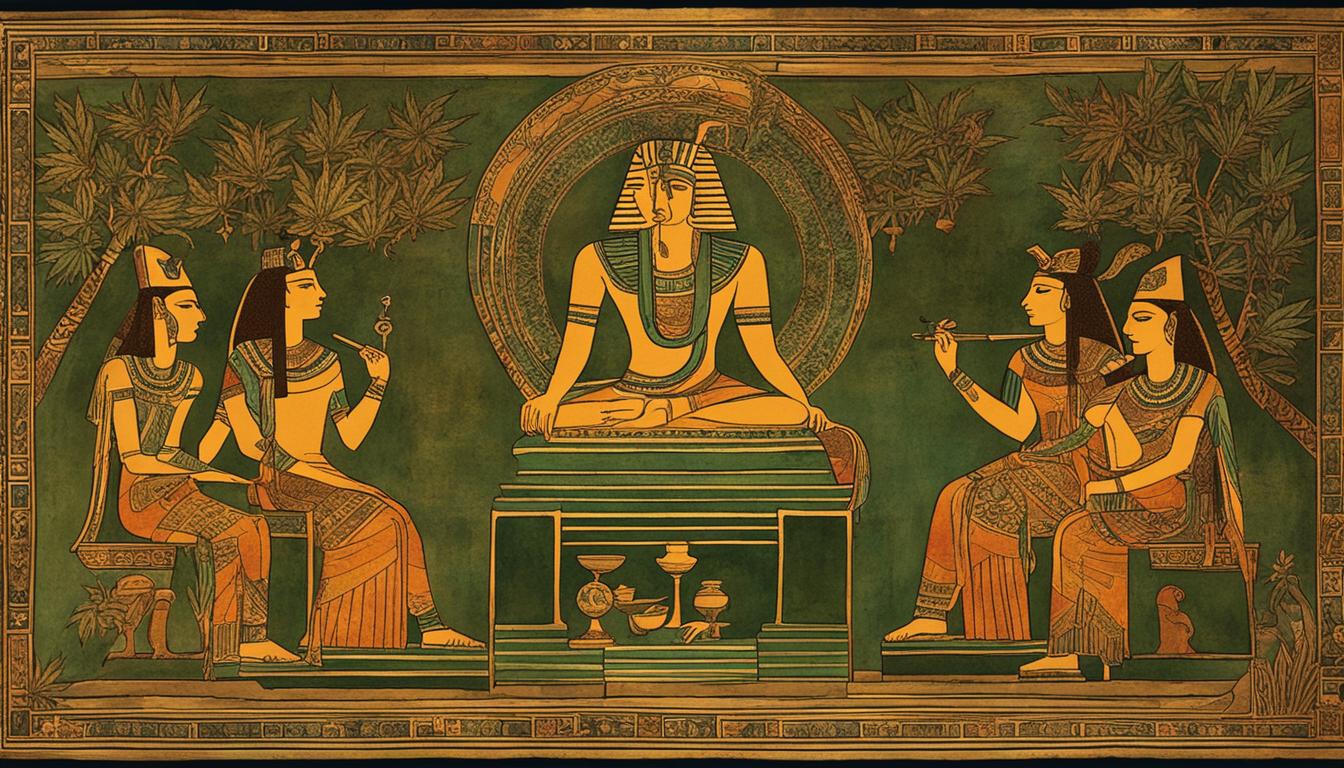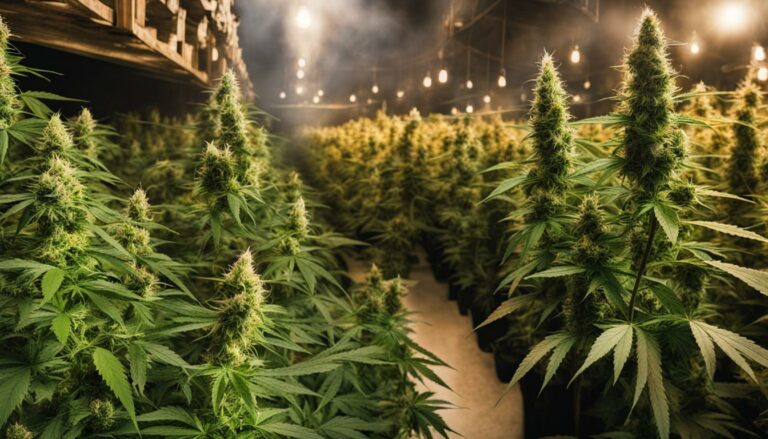What Evidence Is There of Cannabis Use in Ancient Rome?
Discover the intriguing world of ancient Rome and uncover the hidden secrets of cannabis use in this remarkable civilization. Journey back in time to explore the historical sources and Roman archaeological evidence that point towards the presence of cannabis within their society.
As we delve into the annals of ancient history, we encounter fascinating accounts of cannabis and its significance in Roman culture. These ancient texts provide us with invaluable insights into the role cannabis played in the medical, cultural, and social aspects of ancient Rome.
While direct archaeological evidence may be elusive, the writings of prominent Roman authors and philosophers such as Pliny and Seneca shed light on the widespread use of cannabis in this ancient civilization. By examining these historical sources, we gain a deeper understanding of the medicinal properties ascribed to cannabis and its cultural significance within Roman society.
So, join us on this captivating journey as we uncover the evidence of cannabis use in ancient Rome. Unlock the secrets of Roman archaeological findings and delve into the intriguing historical texts that provide a glimpse into the cannabis-infused world of ancient Rome.
Cannabis in Ancient Roman Medicine
Roman medical literature provides insights into the use of cannabis in ancient Rome. Doctors such as Dioscorides and Galen documented the medical properties of this plant and its potential applications. According to their writings, cannabis was believed to have medicinal benefits for treating conditions such as gonorrhea. Additionally, it was also recognized for its ability to produce strong ropes, showcasing the versatility of this plant in ancient Roman society.
One of the notable observations made by Roman doctors was the impact of cannabis on sexual activity. They believed that cannabis could decrease libido and cause impotence when consumed in large quantities, aligning with the prevailing belief that excessive sexual activity could have detrimental effects on physical and mental well-being. Furthermore, cannabis was served in small cakes for dessert, indicating that it was consumed in a controlled and deliberate manner.
“Cannabis was believed to have medicinal benefits for treating conditions such as gonorrhea and was recognized for its ability to produce strong ropes.”
While cannabis was recognized for its medicinal properties and practical applications, it is important to note that excessive consumption could induce nausea. This suggests that the ancient Romans were aware of both the benefits and potential risks associated with cannabis use, highlighting their nuanced understanding of this plant. However, further research and archaeological findings are necessary to fully uncover the extent of cannabis use in ancient Roman medicine.
| Medical Uses of Cannabis in Ancient Rome | Beliefs and Observations |
|---|---|
| Treatment of gonorrhea | Recognized by ancient Roman doctors |
| Production of strong ropes | Documented for its practical applications |
| Decrease in sexual activity | Belief in the ability of cannabis to reduce libido |
| Potential for inducing nausea | Recognized as a potential risk of excessive consumption |

Roman Views on Drug Use and Alcoholism
Ancient Roman society had varying views on drug use and alcohol, as expressed by influential authors and philosophers such as Pliny and Seneca. These perspectives shed light on both the allure and dangers associated with substance consumption during this time.
Pliny’s Views on Alcohol
“Alcohol is a violent thing… it brings frenzy, crime, and madness. It publicizes disgraceful behavior and leads to noise, screaming, and confusion. It brings exhaustion, leads to a loss of memory, weakens the body, and gives birth to a dizzying headache… It creates a longing for sleep, leads to distress, and incites laziness.”
– Pliny the Elder
Pliny the Elder, known for his encyclopedic works, observed the negative effects of alcohol in Ancient Rome. He highlighted its association with criminality, fatigue, hypersexuality, and decreased sexual potency. Pliny saw alcohol as a potential threat to the social order, emphasizing its potential for chaos and disruption.
Seneca’s Views on Alcoholism
“This poison passes from the stomach to the brain. It leaves behind long-lasting damages, impairing the mind and distorting one’s thoughts.”
– Seneca the Younger
Seneca the Younger, a Stoic philosopher, condemned excessive alcohol consumption and its long-term consequences. He believed that alcoholism could cause lasting harm to an individual’s mental faculties and cognitive abilities. Seneca warned against the addictive nature of alcohol and its potential to corrupt one’s thinking.
Negative Effects of Alcohol in Ancient Rome
Both Pliny and Seneca’s viewpoints highlight the prevalent understanding in ancient Rome of the detrimental effects of alcohol. Alcohol was seen as a substance that could disrupt social order, lead to criminal behavior, induce physical and mental exhaustion, and impair cognitive functions. These perspectives serve as a cautionary reminder of the potential dangers associated with excessive alcohol consumption during this period.
| Effects of Alcohol in Ancient Rome | Pliny’s Perspective | Seneca’s Perspective |
|---|---|---|
| Frenzy and madness | ✓ | |
| Criminal behavior | ✓ | |
| Increase in sexual activity | ✓ | |
| Decreased sexual potency | ✓ | |
| Fatigue and exhaustion | ✓ | |
| Headaches | ✓ | |
| Loss of memory | ✓ | |
| Distorted thinking | ✓ | |
| Impaired cognitive abilities | ✓ |
Cannabis in Ancient Greek and Roman Culture
Cannabis held a significant place in the culture of both Ancient Greece and Rome. It was woven into the fabric of society, leaving traces in literature, art, and even religious practices. The use of cannabis in these ancient civilizations went beyond its medicinal properties, extending into recreational and spiritual realms.
In Ancient Rome, cannabis was mentioned in various works of literature, including both comic and tragic plays. It is believed that cannabis played a role in dream interpretation, with references to its effects on dreams found in ancient texts. This suggests that cannabis was not only consumed for its physiological effects, but also for its potential to induce altered states of consciousness.
Furthermore, cannabis likely had a place in the religious practices of Ancient Greece and Rome. The use of psychoactive substances, including cannabis, was common in religious ceremonies and rituals. These substances were believed to facilitate communication with deities and enhance spiritual experiences. The cultural significance of cannabis in ancient Greek and Roman religion underscores its widespread use and importance in these societies.
| Aspect | Ancient Greek Culture | Ancient Roman Culture |
|---|---|---|
| Medicinal Use | Cannabis was used to treat various ailments, including inflammation and pain. It was also believed to have aphrodisiac properties. | Similar to the Greeks, the Romans used cannabis for medicinal purposes, primarily for its analgesic and sedative effects. |
| Recreational Use | Cannabis was consumed recreationally, often in the form of beverages. | Ancient Romans consumed cannabis recreationally, particularly in social settings and during festivals. |
| Spiritual Use | Cannabis played a role in religious practices, where it was believed to enhance spiritual experiences and facilitate communication with deities. | Similar to the Ancient Greeks, cannabis likely had spiritual significance in Roman religious ceremonies and rituals. |
Roman Archaeological Evidence of Cannabis
While direct archaeological evidence of cannabis use in ancient Rome is scarce, there are indications of its presence in Roman society. The continuous habitation of the region has made it challenging to find physical remains of cannabis consumption. However, various sources suggest that cannabis was likely used in ancient Rome.
Ancient texts provide clues to the use of cannabis in Roman society. For example, Roman medical literature mentions cannabis, known as Cannabion, and its various uses. It was believed to have medicinal properties, used in creating strong ropes, and even as a mosquito repellent. Furthermore, the writings of Roman authors and philosophers like Pliny and Seneca mention the effects of cannabis, along with alcohol and opium, on individuals.
“Cannabion, which is called Cannabis by some, is harmful to the genitalia, causing decline in human strength,” wrote Pliny the Elder.
In addition to textual evidence, artifacts found in Roman archaeological sites also hint at the use of cannabis in ancient Rome. These artifacts, such as smoking paraphernalia and residue on pottery, provide indirect evidence of cannabis consumption. Although the presence of cannabis remains is not as prominent as other substances like alcohol or opium, their discovery suggests that cannabis played a role in Roman culture and society.
Table: Roman Archaeological Evidence of Cannabis
| Artifact Type | Description | Location |
|---|---|---|
| Smoking Pipes | Small, intricately designed pipes used for smoking cannabis | Villa of the Mysteries, Pompeii |
| Residue on Pottery | Traces of cannabis residue found on pottery fragments | Various sites across ancient Rome |
| Shards of Hemp Fibers | Remnants of hemp fibers used in the production of cannabis products | Castra Albana, Rome |
While more comprehensive archaeological evidence is needed to fully understand the extent of cannabis use in ancient Rome, the combination of textual references and the discovery of cannabis artifacts suggests its presence in Roman society. Further exploration and analysis of archaeological sites may reveal additional insights into the use and cultural significance of cannabis in ancient Rome.
Conclusion
After examining the historical sources and cultural context, it is evident that cannabis had a place in ancient Roman society. While the direct archaeological evidence may be lacking, references in ancient texts and the wider use of cannabis in other ancient cultures strongly suggest its consumption in ancient Rome.
Cannabis played a significant role in Roman medicine, with renowned doctors like Dioscorides and Galen recognizing its potential medicinal uses. It was also mentioned in Roman medical literature as Cannabion, believed to have properties such as repelling mosquitos and creating strong ropes.
Furthermore, cannabis held cultural significance in both Ancient Greek and Roman society, being mentioned in literature and potentially used for recreational and spiritual purposes. It is clear that cannabis, along with alcohol and opium, played a role in the medical, cultural, and social aspects of ancient Rome.
While further research and archaeological findings may unveil more concrete evidence in the future, the existing evidence supports the conclusion that cannabis was indeed consumed in ancient Roman culture.
FAQ
What evidence is there of cannabis use in Ancient Rome?
While there is no direct archaeological evidence of cannabis use in ancient Rome, references in ancient texts and the cultural significance of psychoactive plants suggest that cannabis was likely consumed in ancient Roman society. Further research and archaeological findings may provide more concrete evidence in the future.
What was the role of cannabis in Ancient Roman medicine?
Cannabis was mentioned in Roman medical literature and was believed to have various uses such as treating gonorrhea and creating strong ropes. However, it was also believed to decrease sexual activity, cause impotence, and induce nausea. It was served in small cakes for dessert and was believed to have a “drying effect” when consumed in large quantities.
What were the Roman views on drug use and alcoholism?
Ancient Roman authors and philosophers like Pliny and Seneca had varying views on drug use and alcohol. Pliny wrote about the negative effects of alcohol, including frenzy, criminality, tiredness, hypersexuality, and decreased sexual potency. Seneca believed that excessive alcohol consumption had long-lasting damaging effects on individuals. Both writers saw alcohol as a potential threat to the social order.
How did cannabis play a role in Ancient Greek and Roman culture?
Cannabis had cultural significance in Ancient Greek and Roman society. It was mentioned in literature, including on the comic and tragic stage, as well as in dream interpretation. While references to industrial hemp are more abundant, it is believed that cannabis was consumed for medicinal, recreational, and spiritual purposes in ancient Rome.
Is there any archaeological evidence of cannabis use in Ancient Rome?
While there is no direct archaeological evidence of cannabis use in ancient Rome, cannabis remains have been identified in archaeological sites. The continuous habitation of the region has made it difficult to find physical remains of cannabis consumption. However, the references in ancient texts and the widespread use of cannabis in other ancient cultures suggest that it was likely used in ancient Rome as well.
What is the conclusion regarding cannabis use in Ancient Rome?
While the evidence of cannabis use in ancient Rome is not as explicit as that of alcohol or opium, references in ancient texts and the cultural significance of psychoactive plants suggest that cannabis was likely consumed in ancient Roman society. Further research and archaeological findings may provide more concrete evidence in the future. However, it is clear that cannabis played a role in the medical, cultural, and social aspects of ancient Rome.














